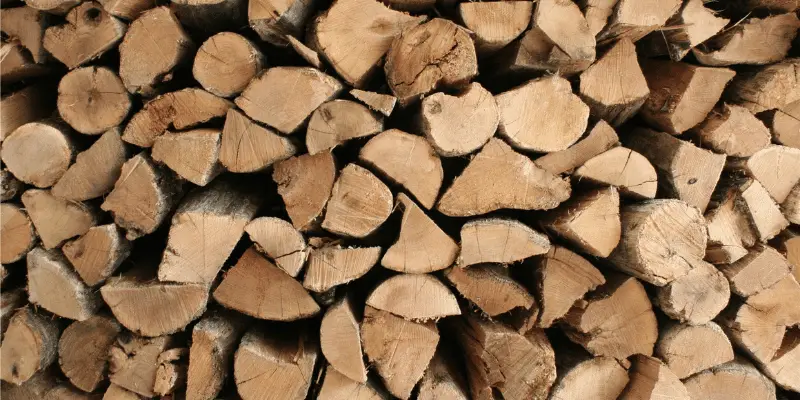In the choice between cord and rick of wood, consider the availability, convenience, and cost factors. Both cord and rick of wood are units of measurement for firewood.
The cord measures 128 cubic feet, while a rick typically measures 1/3 to 1/2 cord. When choosing between the two, it’s important to assess your specific needs, storage space, and budget. While a cord may offer better value for larger quantities, a rick may be more suitable for smaller households or limited storage spaces.
Understanding the differences between cord and rick can help you make an informed decision when purchasing firewood for your heating needs.
Understanding Cord And Rick Measurements
Understanding Cord and Rick measurements is essential for anyone who uses firewood. Cord and Rick are two common measurements used for estimating the quantity of firewood. Each measurement has its own characteristics and understanding the differences between them is crucial for purchasing and using firewood efficiently.
Definition Of Cord And Rick Measurements
A cord is a traditional measurement unit for firewood. It is defined as a stack of firewood that measures 4 feet high, 4 feet wide, and 8 feet long. This results in a total volume of 128 cubic feet. On the other hand, a rick of wood, also known as a face cord, is typically a stack of firewood that measures 4 feet high and 8 feet long. However, the width of a rick can vary depending on the length of the firewood pieces.
How Cord And Rick Measurements Differ
The primary difference between cord and rick measurements lies in their standardized dimensions. While a cord has specific and uniform measurements of 4x4x8, a rick can vary in width, making it more flexible for different sizes of firewood pieces. This difference makes ricks more suitable for smaller storage areas where a full cord may not fit. However, it’s important to note that this variability in dimensions can lead to discrepancies in quantity if not measured accurately.
Factors Affecting The Quantity Of Firewood In Cord And Rick Measurements
Several factors can affect the quantity of firewood when using cord and rick measurements. These factors include the size and shape of the firewood pieces, the stacking method, and any gaps or spaces within the stack. Additionally, the accuracy of measurement and the moisture content of the firewood can also impact the actual amount of usable wood in a cord or rick. Understanding these factors is crucial for accurately estimating the amount of firewood needed for heating or other purposes.

Quality And Characteristics Of Cord Vs Rick Firewood
Finding the right type of firewood is essential for efficient and effective heating. Cord and rick firewood are two popular choices, each with its own unique qualities. Understanding the key characteristics and qualities of each type can help you make an informed decision on which type of firewood is best suited for your needs.
Varieties Of Wood Suitable For Cord And Rick Firewood
Both cord and rick firewood can be sourced from a variety of wood types. It’s important to consider the density and heat output of the wood when choosing the right variety for your needs. Some popular wood types suitable for both cord and rick firewood include:
- Oak
- Maple
- Ash
- Hickory
- Birch
Comparing Density And Heat Output Of Cord And Rick Firewood
When comparing cord and rick firewood, it’s important to consider the density and heat output of each type. Cord firewood typically consists of tightly stacked, uniform pieces, resulting in a higher density and greater heat output compared to rick firewood, which is less uniform and therefore may have variations in density and heat output.
Considerations For Seasoning And Storage
Proper seasoning and storage are crucial for maximizing the efficiency and longevity of firewood. Cord firewood is generally easier to stack and store due to its uniform size and shape. On the other hand, rick firewood may require more careful stacking and storage to ensure proper seasoning and airflow for optimal combustion.
Practical Considerations: Handling And Transportation
Finding the right type of firewood to suit your needs involves considering various practical aspects, particularly the handling and transportation of the wood. When it comes to cord vs rick firewood, there are noticeable differences in how they are handled and transported. Let’s delve into the practical considerations of this aspect and explore the challenges and solutions involved in managing both types of firewood.
Handling Cord Vs Rick Firewood: Pros And Cons
When comparing the handling of cord and rick firewood, it’s important to weigh the pros and cons of each. While cord firewood comes in consistently sized pieces, making it easier to stack and handle, rick firewood is often less uniform in size and shape, which can present challenges during stacking and transport.
Transportation Challenges And Solutions For Cord And Rick Firewood
The transportation of firewood can be a significant consideration for many homeowners. Cord firewood, due to its uniform size, can be easier to load and transport, especially in larger quantities. On the other hand, rick firewood, with its varying sizes and shapes, may require more effort and creativity when it comes to loading and securing it for transport. It’s important to carefully consider the transportation challenges and explore suitable solutions to ensure the safe and efficient movement of firewood from one place to another.
Utility And Convenience For Household Use
When it comes to household use, considering the utility and convenience of both cord and rick firewood is crucial. Cord firewood, with its standardized size, can offer easier handling and more efficient stacking. Conversely, rick firewood, although potentially requiring more effort in handling and transportation, can provide a diverse mix of wood sizes, suitable for various heating needs.
Environmental Impact And Sustainability
When it comes to choosing between cord and rick firewood, considering their environmental impact and sustainability is crucial. Let’s take a closer look at the ecological footprint, sustainable management, harvesting, and carbon emissions to understand the long-term sustainability of these firewood options.
Ecological Footprint: Cord Vs Rick Firewood
Both cord and rick firewood have their ecological footprint, with cordwood typically being more densely packed and able to store more energy per unit volume. On the other hand, rick firewood tends to be less efficient in terms of energy density and requires more space for storage. Cordwood, therefore, may have a slightly smaller ecological footprint due to its higher energy density compared to rick firewood.
Sustainable Management And Harvesting Of Firewood
Sustainable management and harvesting of firewood are essential for maintaining healthy forest ecosystems. Harvesting cordwood often involves selective cutting and sustainable forestry practices to ensure the long-term health and diversity of the forest. Similarly, rick firewood can be sustainably managed through responsible harvesting techniques and reforestation efforts, contributing to the overall sustainability of the forest ecosystem.
Carbon Emissions And Long-term Sustainability
Cord and rick firewood release carbon emissions when burned, contributing to greenhouse gas emissions. However, proper management and sustainable harvesting practices can mitigate these impacts and contribute to the long-term sustainability of wood as a renewable energy source. It’s crucial to consider the overall carbon emissions and the potential for sustainable practices to ensure the continued sustainability of using wood for heating and energy needs.
Economical And Practical Decision Making
Cost-effectiveness: Cord Vs Rick Firewood
When choosing between cord and rick firewood, considering the cost-effectiveness becomes pivotal. Understanding the economic implications of each option is essential for making a practical decision.
Optimal Choice Based On Heating Needs And Available Space
Optimizing your choice of firewood depends on your specific heating needs and the available space for storage. Recognizing the factors that influence this decision-making process is crucial.
Factors Influencing The Decision-making Process
It’s essential to weigh the various factors that influence the decision-making process between cord and rick firewood. Factors such as cost, heating efficiency, and storage space play a significant role in determining the most practical and economical choice.
In terms of the blog post’s content:
Cord vs Rick Firewood: Making a Cost-Effective Choice
When it comes to deciding between cord and rick firewood, understanding the cost-effectiveness of each option can greatly impact your decision. A cord of firewood is typically 128 cubic feet, while a rick usually measures 42 cubic feet. Consider the cost per unit of measurement and the overall space you have available before making your decision.
Optimal Choice Based on Heating Needs and Available Space
The optimal choice of firewood is largely dependent on your specific heating needs and the available storage space. Cord firewood is suitable for those requiring a larger quantity of firewood, whereas a rick may be a better fit for those with limited space. Understanding these factors will help you make a practical and economically sound decision.
Factors Influencing the Decision-Making Process
Factors such as cost, heating efficiency, and storage space significantly influence the decision-making process between cord and rick firewood. It’s essential to carefully consider these aspects to ensure you make the most economical and practical choice for your heating needs.
Frequently Asked Questions For Cord Vs Rick Of Wood
What Are The Differences Between Cord And Rick Of Wood?
In firewood terms, a cord measures 128 cubic feet, while a rick is smaller, about 1/3 the size of a cord. Cords are stacked in specific measurements, while ricks can vary in size and shape. Both are commonly used for heating and cooking purposes.
How Much Wood Is In A Cord And How Does It Compare To A Rick?
A cord measures 4 feet high, 4 feet wide, and 8 feet long, with a standard firewood length of 16 inches. A rick is approximately equal to 1/3 of a cord, often measuring 4 feet high and 8 feet long, but varies in width and firewood length.
Which Is More Cost-effective, Purchasing A Cord Or A Rick Of Wood?
Generally, purchasing a cord of wood is more cost-effective compared to buying ricks. Buying in bulk allows for savings and ensures a consistent supply for extended periods. However, for those with less storage space or lower wood needs, ricks may be a suitable option.
How Should Firewood Be Stored For Optimal Burning Efficiency?
To maintain optimal burning efficiency, it’s best to store firewood off the ground, in a well-ventilated area with protection from the elements. Stacking wood in a crisscross pattern, allowing air circulation, and covering the top can also prevent moisture and rot.
Proper storage preserves firewood quality.
Conclusion
The choice between cord and rick of wood depends on your specific needs. Both options have their advantages and disadvantages, and it’s crucial to consider factors such as space, budget, and convenience. By understanding the differences, you can make an informed decision that best suits your requirements and preferences.



2 thoughts on “Cord Vs Rick of Wood: Which is Better for Firewood?”